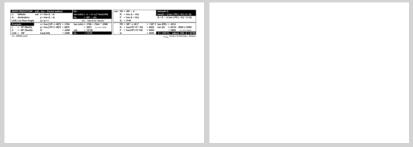
NavList:
A Community Devoted to the Preservation and Practice of Celestial Navigation and Other Methods of Traditional Wayfinding
From: Hanno Ix
Date: 2015 Feb 20, 18:00 -0800
However, that was not the issue. At issue were the specific advantages of this method. Is it particularly brief, easy, accurate, fast - in other words truly concise as its name claims?
http://www.oceannavigator.com/January-February-2003/Sight-reduction-methods-compared/
Exactly! BTW: the necessary tables cover at least 36 pages. About evaluating the strict formula the article says:
This is the only method that does not require tables to determine the
intercept and azimuth. Like all other methods, a Nautical Almanac is
required to determine the LHA and declination of the observed body. This
method utilizes the trigonometric functions found on most scientific
calculators to produce a computed altitude and an azimuth angle. These
are easily converted to an intercept and true azimuth. This is a quick
and easy method of sight reduction that plots from the DR position. The
disadvantage of this method is that it requires an electronic calculator
involving numerous key strokes providing the opportunity for error.
Almost correct. Except, of course, you do need a table, the cos-table, in written or electronic form.
The article does not include the hav-DONIOL - it probably was not known at the time. However, it is clear that it has the same advantages as the strict formula because it is a version of it using the haversine in stead of cos / sin. You an easily construct it since hav(angle) = sin^2(angle/2). It covers only 2 pages.
And more: There is no confusion re: sign rules, and there is just a single multiplication for finding Hc. Also, as Geoffry says, you will never be lost in log-land. Finally, you can easily do it by hand as opposed to evaluating the strict formula which requires 3 multiplications.
I have included the NA sight reduction worksheet by the Royal Navy and G. Rudzinski's hav-DONIOL worksheet. The difference is striking.
After reading the entire article and considering all this you may ask yourself which method is truly concise?
As for the azimuth: There is now a very simple graph that can be used with any method. You will find it and the hav-DONIOL worksheet on this list's document g29725. You may also look at my worksheet at g30071.
H
____________________________________________________________
Attached:
NASR worksheet, Royal Navy
hav-Doniol , G. Rudzinski, Dec 21, 2014, g29725,








